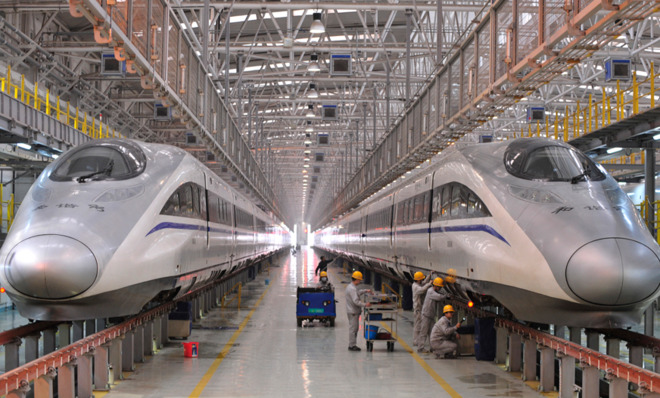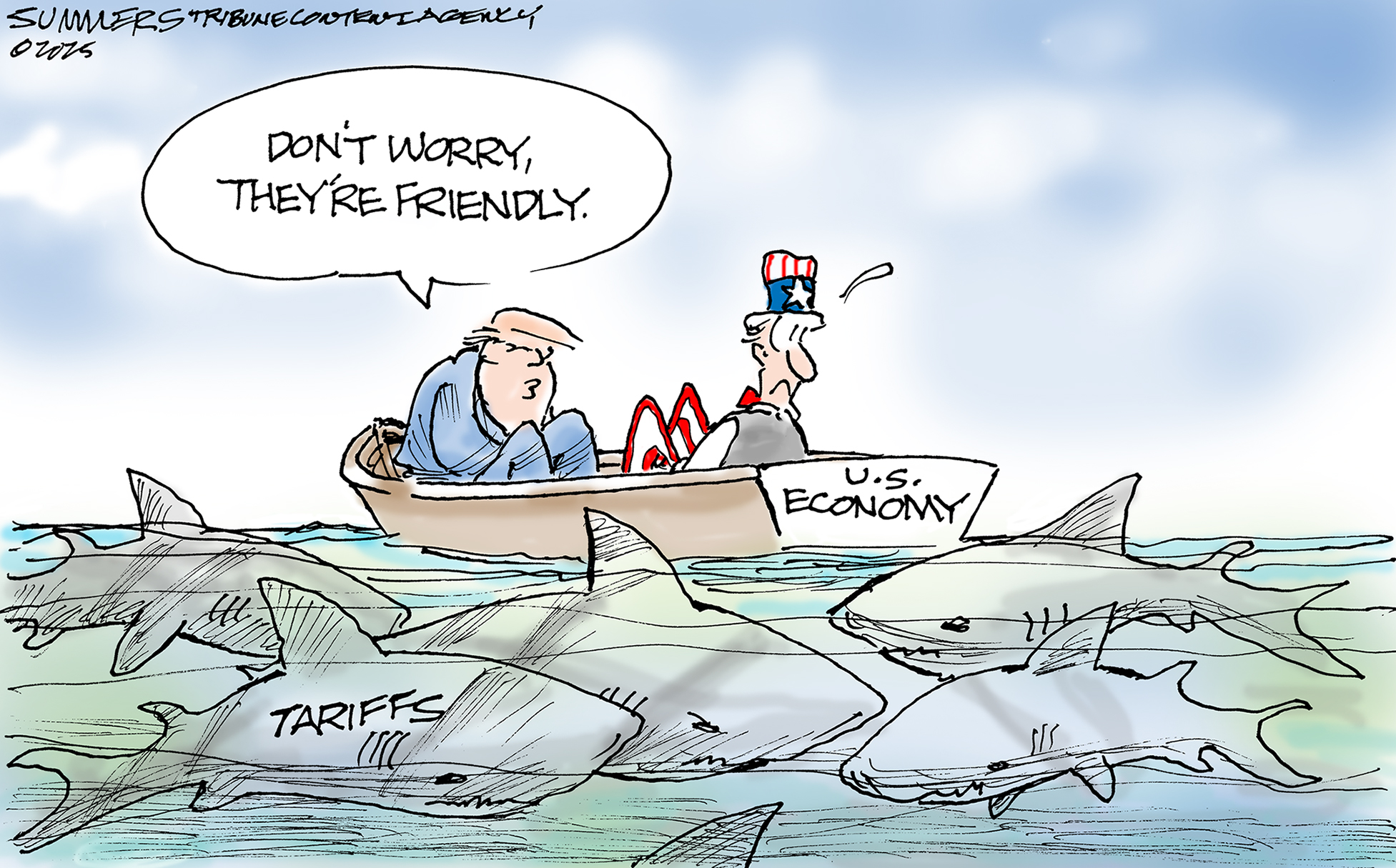What would it take for China to build a train to the U.S.?
It's technically possible — but highly implausible

The state-run Beijing Times reported recently that China is in discussions to build a high-speed train from northeast China to the continental United States. That's a distance of about 8,000 miles. The train would reportedly leave northeast China, cross through Siberia, tunnel underwater for about 125 miles across the Bering Strait, resurface in Alaska, and slice through Canada to reach the lower 48. The trip would reportedly take two days, with the train averaging a speed of about 220 miles per hour.
Yeah, it sounds like something out of a James Bond movie. But in fact, the technology does exist to build such a train track, engineering experts say. There's just one little problem: China's proposal sounds like an economic disaster.
"What's being proposed is unprecedented," says Youssef Hashash, a civil and environmental engineering professor at the University of Illinois at Urbana-Champaign, who has been involved in many tunnel and deep excavation projects around the U.S. and Canada.
Subscribe to The Week
Escape your echo chamber. Get the facts behind the news, plus analysis from multiple perspectives.

Sign up for The Week's Free Newsletters
From our morning news briefing to a weekly Good News Newsletter, get the best of The Week delivered directly to your inbox.
From our morning news briefing to a weekly Good News Newsletter, get the best of The Week delivered directly to your inbox.
Consider the proposed 125-mile underwater portion. The longest undersea tunnel in the world is the Channel Tunnel, which runs under the English Channel for just under 25 miles. That train, opened in 1994, cost about $7.8 billion then ($20.2 billion today) and ran 80 percent over budget. That tunnel has had several fires, including one in 2008 that cost about $82 million to repair and injured several people.
China has several options for building its tunnel under the Bering Strait, Hashash says, including constructing the tunnels on dry land and then sinking them — which is how the Ted Williams Tunnel in Boston was built — or using state-of-the-art "tunnel boring machines" to excavate the sea floor.
Outside of the underwater portion, the railway that is above ground would run through some of the most remote terrain in the world, in Siberia, the Yukon, and Alaska. Building a train there is "expensive, a lot of work, and difficult," says Dr. Allan M. Zarembski, a professor and director of the Railroad Engineering and Safety Program at the University of Delaware. He notes that like the Trans Siberian Railroad, the Chinese line would likely have to be built on permafrost, and cut through some pretty rugged mountain ranges. That brings environmental challenges like rock slides, snow, and flooding.
But these technical and logistical hurdles can all be overcome. The real problem is that China is reportedly planning to make this a passenger train. (Freight trains operate at a slower speed, says Zarembski.) If, for some reason, people decide to take a two-day train from San Francisco to Beijing, rather than a 12-hour flight, the economics are nonetheless "an absolute disaster. There's no way this could pay its way back," says Zarembski.
Sign up for Today's Best Articles in your inbox
A free daily email with the biggest news stories of the day – and the best features from TheWeek.com
He says that regular railroad lines cost $1 million to $3 million per mile, which goes up to $10 million per mile in rugged areas like mountains and across permafrost. Tunnels are even more expensive per mile — up to $50 million — and underwater tunnels are especially exorbitant. (China has proposed another 76-mile tunnel across the Bohai sea, which will cost an estimated $36 billion.) Zarembski estimates that the construction costs for the entire rail system would be between $150 billion and $300 billion. Fyodor Soloview, an Alaska businessman who is promoting a Bering Strait railway tunnel, estimates that the entire project would cost much more, at least $2 trillion. On top of that, there's maintenance. The New York Times estimates that a hypothetical high-speed rail between Dallas and Houston would cost around $200,000 per mile per year to maintain — and Texas is hardly Siberia.
Additionally, the Chinese report provides no details on how this high-speed train might hook up with the U.S. rail system. Right now, there are no high-speed rail lines in Canada, and in the United States, the fastest lines are in the Northeast corridor, which still maxes out at 150 miles per hour. So the U.S. lines would have to be upgraded. Zarembski says the only way he could see China making any money on this is if China decides to dedicate it to freight, and even then, it would have to compete with the well-established shipping industry.
When I asked how long the project might take, Hashash laughed, and then said that with the expense, and discussions needing to take place at the local, state, and national level of various countries, "We're talking about something that may take decades to build."
Zarembski's reply to the same question was simpler and perhaps more telling: "Oh boy."
Dana Liebelson is a reporter for Mother Jones. A graduate of George Washington University, she has worked for a variety of advocacy organizations in the District, including the Project on Government Oversight, International Center for Journalists, Rethink Media, the Reporters Committee for Freedom of the Press, and Change.org. She speaks Mandarin and German and plays violin in the D.C.-based Indie rock band Bellflur.
-
 Today's political cartoons - May 11, 2025
Today's political cartoons - May 11, 2025Cartoons Sunday's cartoons - shark-infested waters, Mother's Day, and more
-
 5 fundamentally funny cartoons about the US Constitution
5 fundamentally funny cartoons about the US ConstitutionCartoons Artists take on Sharpie edits, wear and tear, and more
-
 In search of paradise in Thailand's western isles
In search of paradise in Thailand's western islesThe Week Recommends 'Unspoiled spots' remain, providing a fascinating insight into the past